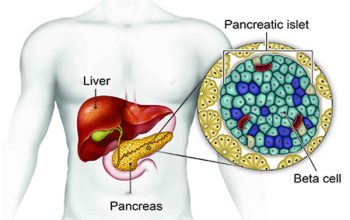When it comes to combating diseases, people often prefer natural ways to do so. This is because there are a plethora of natural herbs and spices that have proven effectiveness against most diseases. What makes them even more attractive is the fact that natural herbs have very less chances of side effects. One such natural herb which is also an integral part of every Indian household is the humble turmeric. It is usually used in cooking to add a dash of color and taste to any dish. However, many swear by its immense medicinal properties. For ages, many Indians have believed that a glass of golden milk – milk with generous amounts of turmeric and honey – is a sure-shot cure for many ailments including cough, cold, body pain, etc. But does turmeric help in fighting an ailment like diabetes? Let us find out.

Diabetes & Turmeric – Some Basics
The blood sugar in our body controls the metabolism and provides energy. Our body produces a natural hormone called insulin that helps regulate these blood sugar levels. However, when the body is not able to adequately use or produce insulin, this results in disruption of the blood sugar levels. This condition is called diabetes1.
A number of studies have been done to check the efficacy of curcumin (a compound found in turmeric) on disease such as diabetes. In the year 2013, a systematic review of such studies was done. This review suggested that curcumin had the ability to decrease blood sugar levels. It was also effective in reducing other diabetes-related complications. Some researchers even found curcumin to be helpful in preventing diabetes2. However, more clinical research and human trials are required to get conclusive results.
Ways To Use Turmeric To Fight Diabetes
Now, we know the benefits of turmeric and its potential ability to fight diabetes. Here’s how you can use it to help fight diabetes:
The Golden Milk
We had mentioned earlier how the golden milk was a popular remedy among Indians to ward off common colds, aches, and pains. You too can reap the benefits of this delicious concoction if you are diabetic. To make this golden milk, you first need to bring the milk to a boil. To about 200 ml of boiled milk, add a teaspoon full of turmeric and let it simmer for about a minute. Now, you can have it at room temperature as it is. This milk is believed to help those with type 2 diabetes mellitus. While this is a popular drink, it is most famously paired with honey. However, adding honey may not be advisable for diabetics. If you are unable to drink this milk without adding honey, do discuss it with the doctor first and only then proceed.
Cinnamon & Turmeric
We all love the smell of cinnamon, don’t we? But did you know that this spice has its own health benefits alongside the quality to enhance taste? It is believed that the combined medicinal values of turmeric and cinnamon can together help reduce abnormal levels of triglycerides and insulin insulin in the body. Abnormal levels of triglycerides are often a result of high-fat food consumption. To prevent this, add a pinch of cinnamon and half a teaspoon of turmeric to a glass of warm water. Stir well and have it an hour after consuming high-fat food. You can also try and have this brew in the morning 30-45 minutes before food on an empty stomach. But make sure each time the water is warm enough and not too cold.
Turmeric Root
What is even better than using commercially produced turmeric powder? Turmeric root. Agreed it may not be a fine powder as per your liking. However, you can rest assured that it is bereft of plastic contamination. And using a turmeric root isn’t very difficult. You can buy a mortar and pestle set made of hammered stone for grinding it. Avoid using a metal mortar-pestle as you may not get the desired result with them. Now, coming back to the turmeric root. Wash the surface and sundry it a day or two before you plan to consume it. Later, grind it to a coarse powder and store it in an airtight container. Consume a teaspoonful of this powder every morning, preferably a little before breakfast. If you have trouble swallowing the coarse powder, then add a few drops of water to it and mix it well in a small bowl. Roll this paste into small balls, let them air-dry for a few minutes, and consume them like a pill.
Turmeric Paste For External Use
One of the symptoms of type 2 diabetes is slow-healing sores and wounds. Using turmeric paste to heal wounds and sores without major side effects has been an age-old medicinal wisdom that has been passed down since generations. You can use a paste made out of turmeric and water for this purpose. Mix a tablespoon of turmeric with ¼ glass of water in a steel bowl until you have a very watery paste. Heat this mix on slow-medium flame and keep stirring it until the mixture gets cooked. Once done, apply this warm mix on the wound or sore. Be cautious not to apply it when the turmeric paste is very hot since it can lead to more burns.
Things To Remember
When it comes to natural herbs, most of us tend to go overboard in our enthusiasm. Nevertheless, it is important to keep in mind that while natural herbs and spices have their benefits, overusing them can also cause harm. So, here are some points to remember if you wish to try turmeric to help you with your diabetes.
- Like with every natural supplement, start with small amounts, track your progress, and only then increase the amount of turmeric in your diet.
- Just because turmeric is a natural spice does not mean that it may not have side effects at all. Some people might not have the tendency to tolerate it. There have been instances where sudden increase in consumption of raw turmeric has resulted in a slight amount of nausea, uneasiness, or indigestion. Again, it is better to start with small doses before increasing the amount.
- Never rule out allergies. You may not know that you are allergic to raw turmeric or curcumin even if you have been consuming turmeric in the cooked form. This is because the heat of cooking often takes away some of its properties, including those that might trigger an allergy. To check for it, try a small dosage of turmeric for a day or two. If you feel anything unusual, discontinue immediately.
- Do not purchase turmeric in bulk, especially the roots. Keeping turmeric for too long might take away its freshness. Since you might take small doses, there is always a likelihood of the turmeric becoming stale.
- Turmeric is also believed to worsen anemia and increase the levels of urinary oxalate. Thus, if you are suffering from anemia or have a history of kidney stones, check with your doctor first before trying raw turmeric for diabetes. Even if you get the green signal, remain cautious with regard to the amount you consume.
Using turmeric can make a difference in controlling diabetes. However, remember that it cannot be used as a sole treatment for diabetes and does not ‘cure’ it. Therefore, never take it as a replacement for your regular diabetes treatment and do reach out to your doctor if you face any problems whatsoever.


